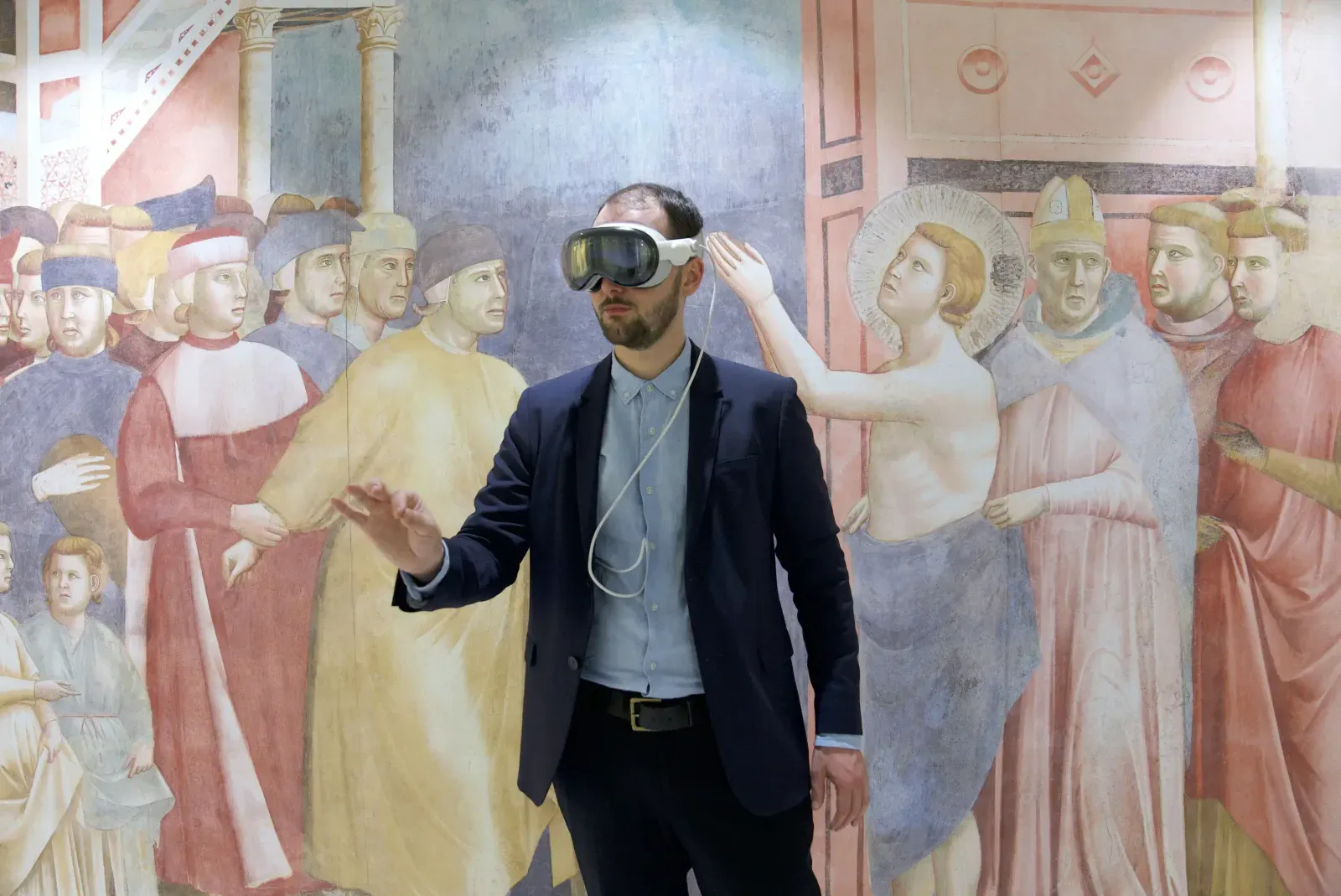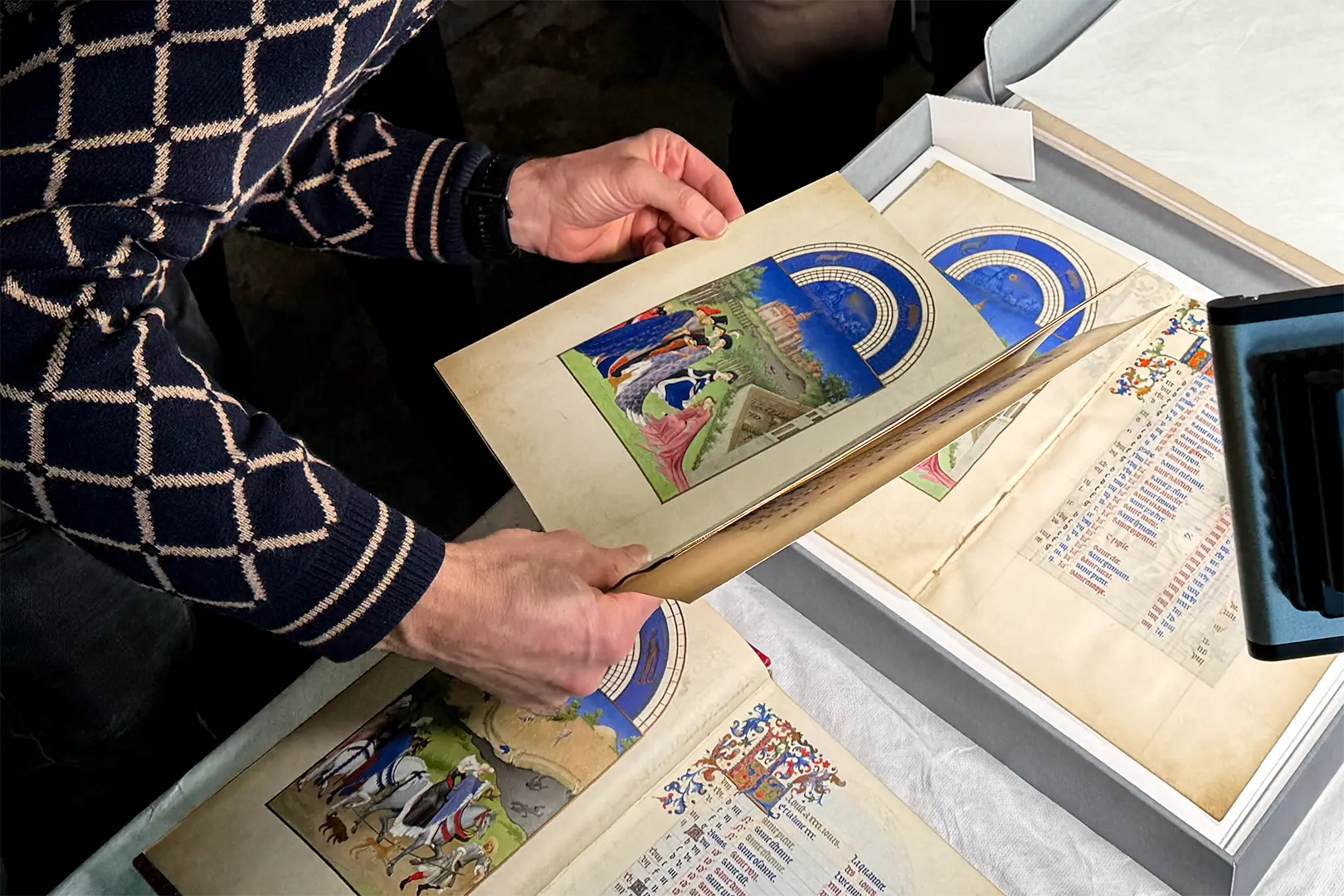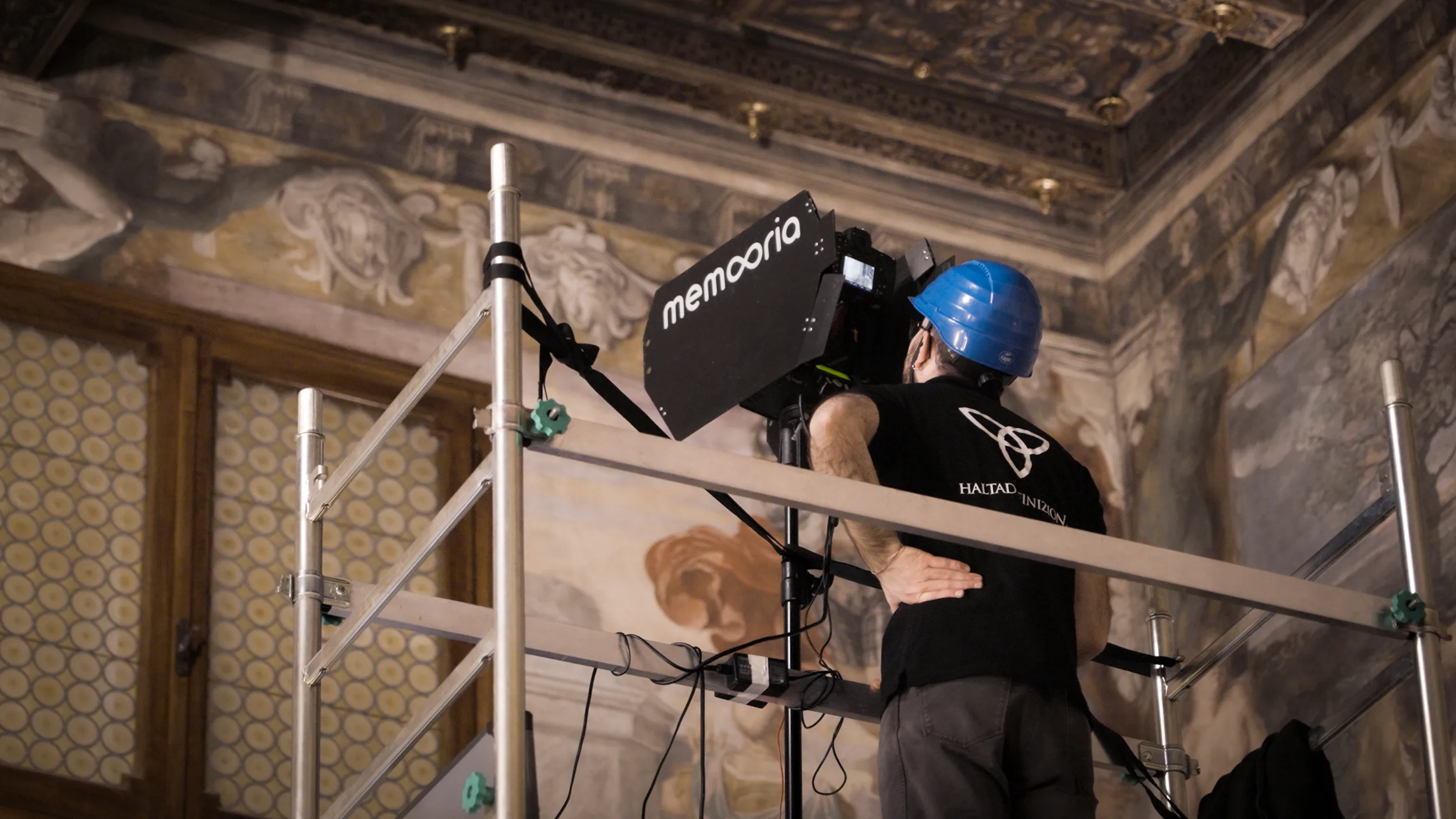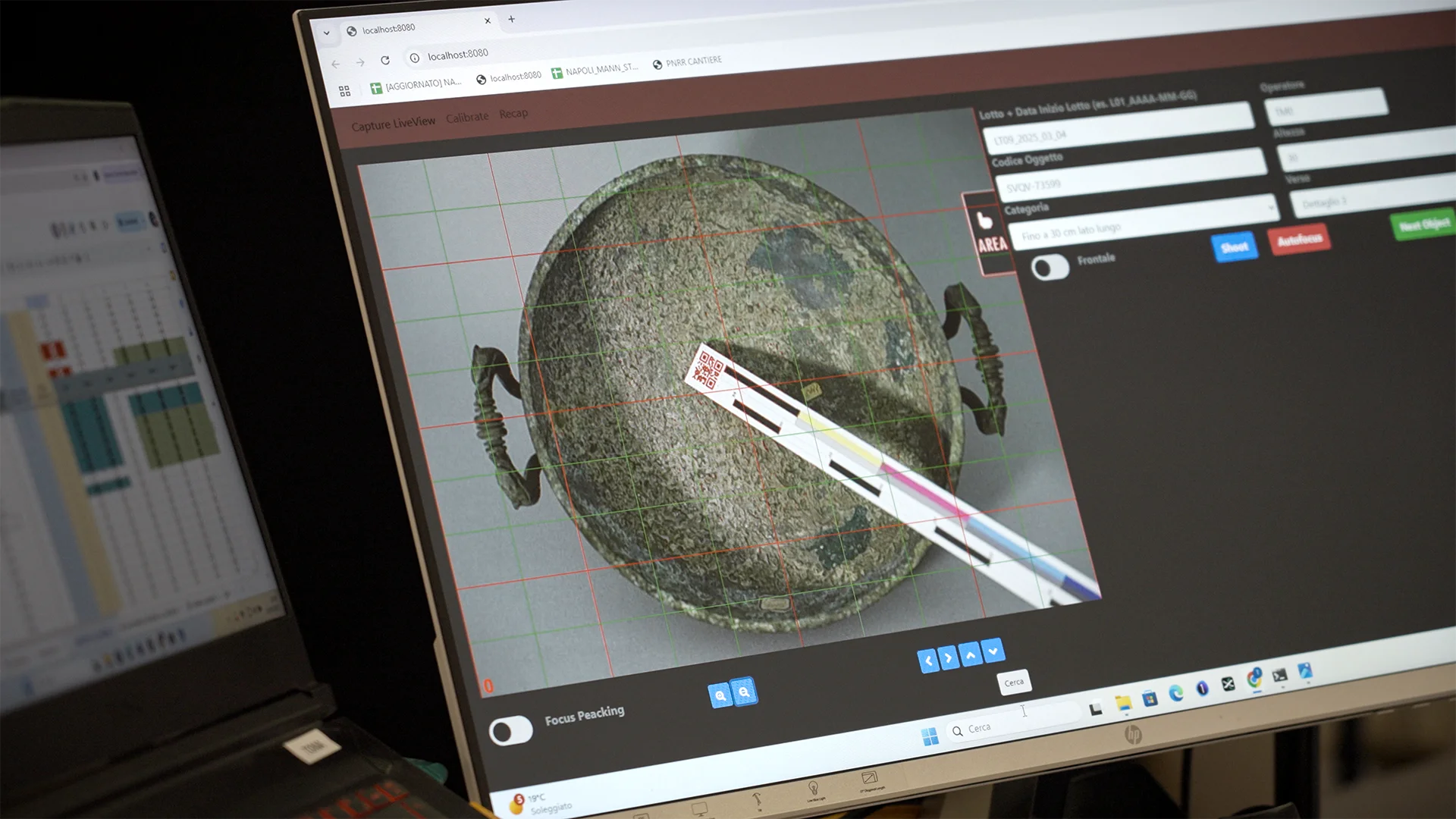Mixed Reality (MR) and Virtual Reality (VR) headsets are cutting-edge technologies that allow users to interact with digital objects as if they were part of the surrounding environment. They are rapidly revolutionizing teaching, entertainment, and accessibility. One of the areas where MR and VR technology are having the greatest impact is in applications for cultural heritage and the arts.
Haltadefinizione has debuted new MR and VR applications at recent public events, showcasing masterpieces from its online Image Bank. With eye tracking, gesture commands, and extraordinary image quality, the latest headsets open up new ways of experiencing artworks and cultural heritage, transforming our perception of art and culture.

The first experience was a VR visit to Giotto’s frescoes in the Upper Basilica of San Francesco in Assisi, created for the Fuorisalone in Milan. Visitors were transported virtually to the heart of the Basilica of Assisi, where they could admire in detail the frescoes depicting the Life of Saint Francis: a new and unique way of experiencing this masterpiece.

Later, another virtual reality experience was presented during the Pitti Uomo trade fair in Florence. This time, visitors gained virtual access to the A.N.G.E.L.O. Archive in Lugo di Romagna, considered the temple of vintage fashion in Italy. They could immerse themselves in a 360-degree view of the former central church, a remarkable historic setting that now houses vintage footwear, hats, leather goods, bags, belts, and small accessories.

Finally, at the We Make Future digital innovation fair in Bologna, the Ministry of Culture presented a Mixed Reality app featuring the Tomb of the Diver of Paestum, a masterpiece of Magna Graecia funerary art. Haltadefinizione’s Gigapixel and 3D digitization of the five slabs made it possible to display a virtual reconstruction of the entire monument.

The three-dimensional model in the viewer allowed visitors to handle the piece virtually. They were able to zoom in on individual scenes and magnify the digitized artifact far beyond its actual size, entering the model to closely observe every detail.
Mixed and Virtual Reality technology make it possible to study works of art at their actual size or enlarged well beyond it, creating unique and engaging user experiences. Users can explore masterpieces from different angles, analyze details through simple eye movements and hand gestures, and compare works from different periods and styles.

There are many applications for these headsets, such as virtual museum tours, temporary exhibitions in digital spaces and new kinds of engaging educational experiences designed for a global audience.
This opens the way to a new era of accessibility and engagement with art, combining tradition and innovation to bring great masterpieces into the future. Haltadefinizione’s goal is to redefine how we interact with artistic and cultural heritage, making it more accessible, interactive, and fascinating than ever.









